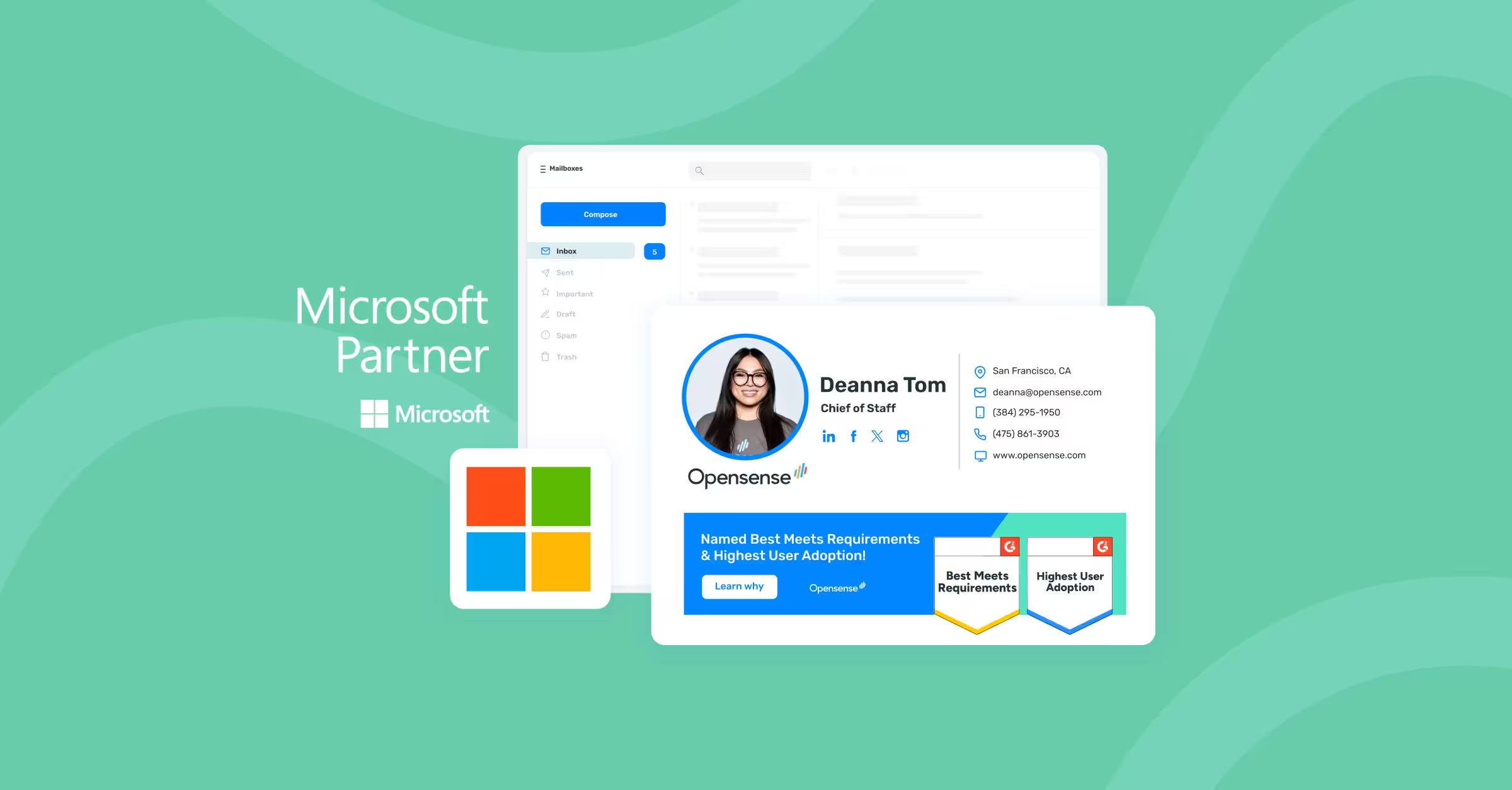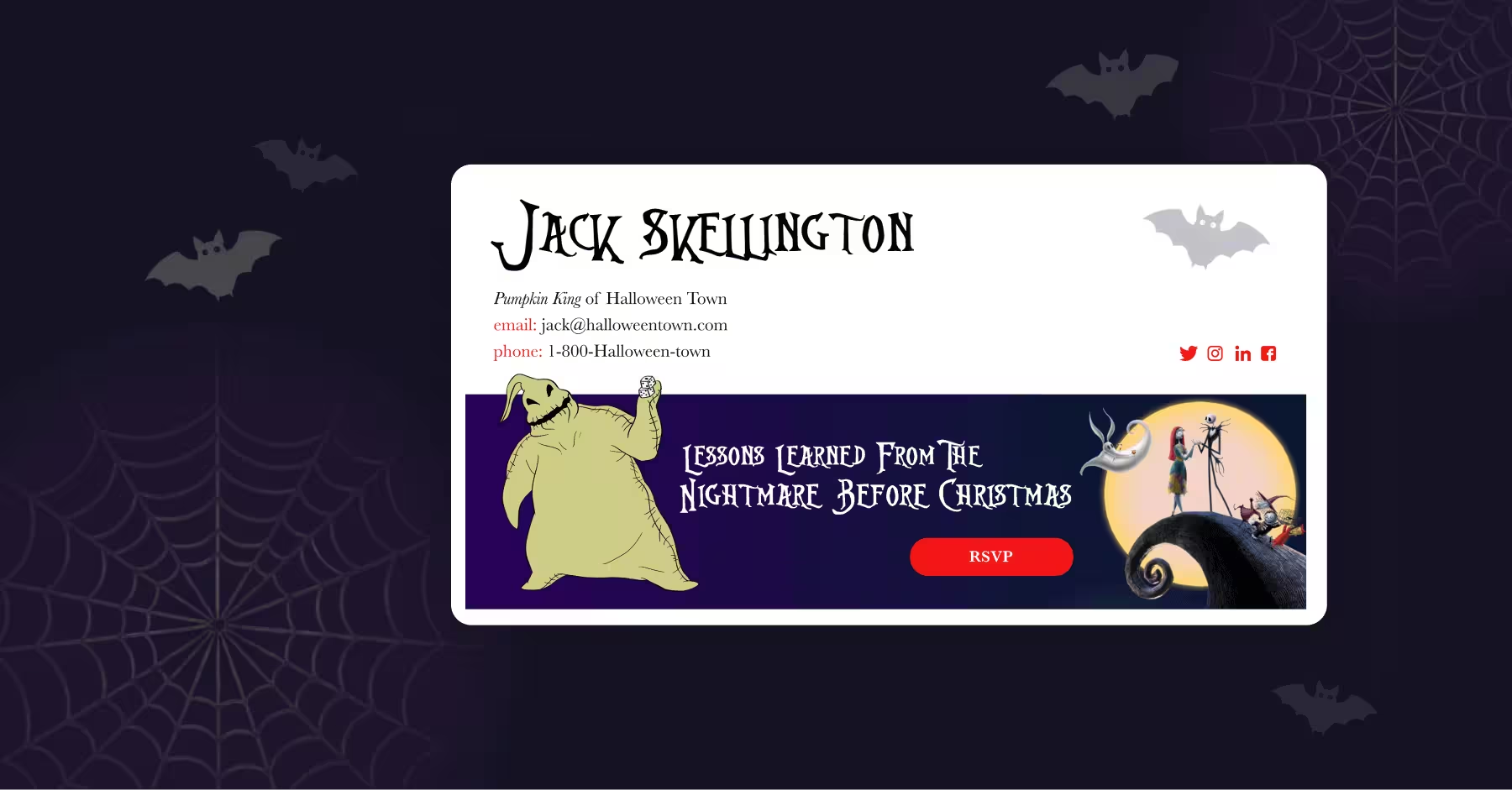
The Ultimate Guide to Account Based Marketing (ABM)
The old way of marketing is dying and a new way is taking its place. In the past, marketing was driven by “leads” and “contacts”. It was one-to-many and often quite spammy. Rarely did marketers take a holistic view of an account - and few tools were designed to help them do this.
Then Came Account Based Marketing (ABM)
The basic premise is criminally simple: treat the people who work at the company you would like to sell to as if they were a connected group of people who probably talk to each other and possibly take decisions together. Woah! As the founder of ABM leader Engagio (and also the founder of Marketo) Jon Miller says, "The reality is, as we always talk about in ABM, sales people don’t focus on leads. They focus on accounts. So, when they’re in Salesforce, they’re logging in, and they’re looking on the account page, they’re looking at the opportunity page, and not looking over on that lead page.” Miller’s point is that maybe marketing should not focus on leads. Because, any crackerjack enterprise sales gal or guy can tell you - this is how things have ALWAYS worked. Marketing teams, however, have not always been in line with sales on viewing accounts through account based marketing strategies. In fact, our close partner ( and customers) Outreach.io now has a specific use case built around Account Based Account Based Sales, the clear twin of ABM. So really account based marketing campaigns are all about aligning the output, tools and creativity of marketing with the holistic account-based view that sales prefers and has always taken.

A more radical way to think about this? Marketing leader Ernan Roman wrote: “The days of spray and pray marketing are over." Ironically, even though ABM strategy examples have also existed in the sales world, today ABM is the new awesome sauce. Dozens of account based marketing companies are designing tools for it. And yet, lots of people still don’t know exactly what account based marketing examples look like in action. And, truth be told, ABM can have a pretty fluid definition.
This document is designed to be the definitive guide to ABM. It should give anyone reading this a firm footing in the domain and prep them to go out and dive deeper into specific content areas and specializations within the broad ABM umbrella of activities, tactics and strategies.
More specifically, we will cover the following:
- The account based marketing benefits for your business
- How to create an account based marketing strategy
- How to map your content to your ABM marketing tactics
- How to drive engagement and event attendance with account based marketing best practices
- How to think about measurement and account based marketing metrics
Ready to get your ABM on?
What the Heck is Account Based Marketing?
Account based marketing (ABM) is a business strategy in which a marketing team designs complete marketing campaigns focused on reaching a potential customer, called an account. This can include a wide range of activities coordinated with sales teams. An account based marketing campaign might target just one contact or lead, but most of the time ABM is designed to speak to multiple parties who occupy different roles at a target account.
Here are a few account based marketing tactics within an overall campaign:
- Email outreach
- An invite in an email signature or email signature banner to an event
- Paid media (AdWords, retargeting, LinkedIn)
- Fun gifts (chocolates, wine, Yeti bottles)
- Customized and personalized landing pages
- Handwritten notes
- A simple but well thought out phone call
- High-quality articles and content (white papers, blogs, videos)
Unlike the old spray-and-pray approach of sending massive amounts of email without targeting, ABM is actually not designed to operate at that scale. To the contrary, a 1:1 ABM campaign makes the bet that a highly focused effort will actually yield better results and faster sales cycles with higher dollar deals than legacy marketing activities. This is not to say ABM replaces all the old methods completely; lots of people still buy lists. But proponents of an account based marketing strategy template PPT say it works better, feels better and is more sustainable over the longer term.
An ABM Example: S’Mores-as-a-Service
Here’s how it works in practice. If you wanted to convince Company ZXY to buy your fancy new SaaS S’Mores (You know - Smore’s-As-A-Service, or SMaaS) 😉 you would identify who the key decision makers are on the account. Then you would plan a slate of activities to speak to them individually but also collectively.
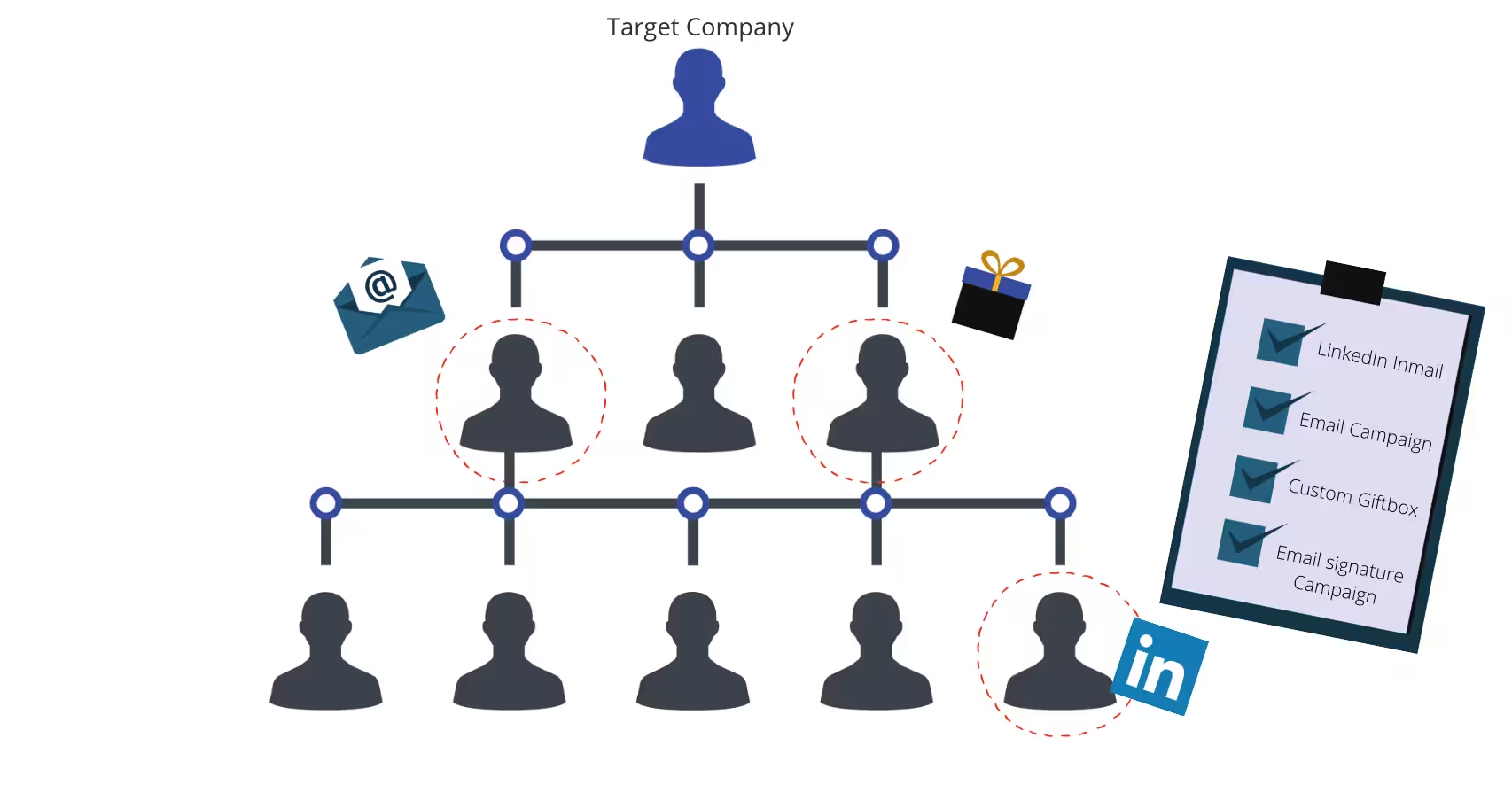
A CMO or marketing leader might get an email explaining how personalized S’Mores is the best marketing asset to delight customers since sliced bread.
A sales leader might get an email citing data on how SMaaS creates stickier relationships and decreases conversion time by 50%.
A sales or marketing ops leader might get a note or a phone call from an SDR explaining how easy it is to integrate SMaaS with all the major CRMs and marketing automation systems.
A CTO or IT leader might get an email explaining how the proprietary tech stack of SMaaS gives it the longest shelf-life of any comparable product and that it can remain warm and sticky for days without needing a reboot.
Next, we might execute account-based advertising with an account based marketing platform as a way to reach people at Company ZXY and reinforce the emails and calls. Next, we may have the sales team reach out via LinkedIn to directly message contacts in the account at ZXY and name-drop that we are also contacting other folks. An account based Marketing LinkedIn play like this is popular and very effective. Then, the account based marketing manager might send them a large box of S’Mores addressed to all of them, in order to start the conversation. We would include a personalized note.
Naturally, we would include beautiful advertising banners under our email signatures with images of mouth-watering s’mores batches😋.
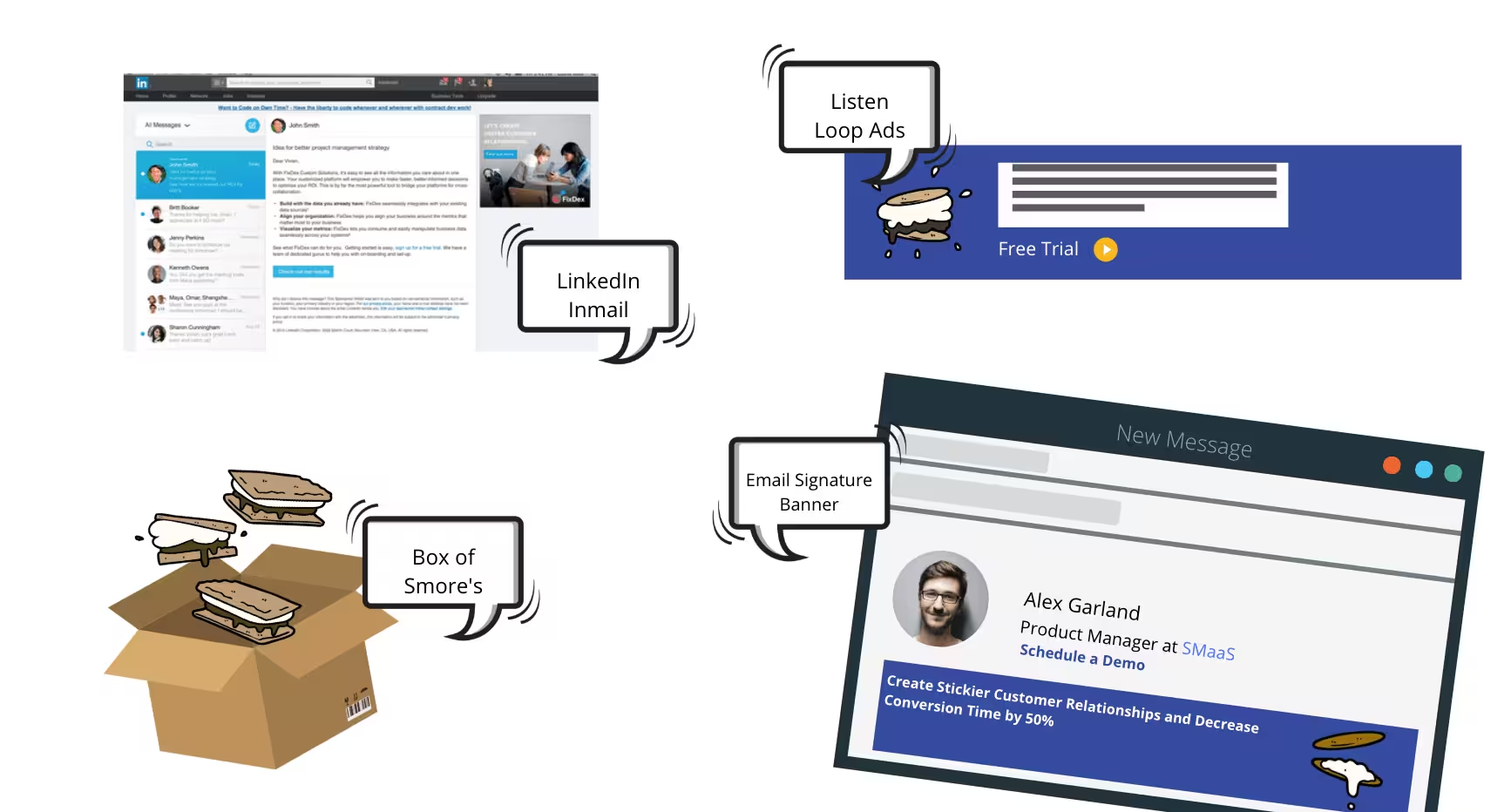
All of this would drive traffic to a landing page customized to ZXY, with a company logo and messaging that clearly shows the prospects “We have taken the time to get to know you and your business.” We say business because ABM is mostly useful for B2B sales. Account based marketing solutions are particularly helpful for multi-stakeholder deals, which are often the highest dollar amounts in the B2B landscape.
7 Reasons Why ABM Works Well
To reiterate, account based marketing tools are particularly useful when trying to connect with multiple buyers in the same organization -- which are likely your largest target accounts. ABM is also useful for upselling existing accounts with potential to grow. The key benefits of ABM are easy to track and it basically enforces the Golden Rule of Sales; put most of your time and energy into the prospects that have the most money to spend on your product.
Here are some more specific benefits of account based marketing.
1. ABM Is Personalized To Small Audience And Cuts Through The Noise
Imagine if you were walking down the street and saw a billboard sign that not only had your name on it but also knew what you did for a living? Spooky, I know. But you would pay attention. Well, that’s what makes an account based marketing tool and strategy so powerful. Because ABM focuses on such a small group, it's possible to craft a campaign that has a very high chance of resonating and will certainly register with your prospects. Contrast this with trying to write copy and design campaigns that appeal to a wide audience. It feels less...personal. Everyone likes it when someone knows their name. This applies that principle to marketing.
2. ABM Doesn’t Care (Much) About Attribution
ABM campaigns are designed to have multiple touches and many ways to interact. This means it is hard to attribute the success or failure of a campaign to any one touch or tactic. And that’s okay. Because many organizations waste massive amounts of energy on attribution. This reduces their ability to take action. In reality, at the end of the day the most important metric is simple. Did you close the deal? With ABM, you can focus on that one true metric.
3. But ABM Also SOLVES The Attribution Problem
Because ABM campaigns are self-contained and have their own budgets, its very easy to know what the ROI of each campaign is. So if you spend $1,000 on an ABM campaign to bring in a beverage company and they sign up to a $10,000 contract, your ROI was $9,000 (in year one, mind you). One-for-one attribution also makes it incredibly easy to roll up ROI by account, by vertical, by region and by country. Granted, you may have a harder time figuring out exactly which tactic has the most impact, but you would probably have that problem anyway if you are using many marketing tactics.
4. ABM Radically Accelerates Sales Cycles
There are a number of reasons for this. First, it allows your sales and marketing teams to focus more intensely on smaller lists of prospects. As a result, the research phase is much faster and focused far more on the obvious Ideal Customer Prospects rather than wasting time casting a super-broad net. ABM also tends to drive a yes or no response much faster. This in turn allows for even greater focus on the viable Ideal Customer Prospects.
5. ABM Eliminates Time Spent Finding New Business Through Broad-Based Marketing
ABM campaigns admit something that all CFOs could have told you a long time ago. In B2B sales, 80% of your revenues come from 20% of your customers. This frees your marketing team from the expensive grind of trying to constantly generate new leads from thin-air. Rather, ABM posits that a smaller pool of targets that could all definitely turn into very large accounts is a far better strategy.
6. ABM Is Flexible
If you hear about some new process or tool or some new type of advertising unit, the beautiful thing is account based marketing automation is designed to be flexible and agile. You can mix and match as you wish and there are few rigid processes. This helps your marketing team behave in a more nimble fashion. It’s also quite amenable to the concept of iteration and marketing sprints.
7. ABM Playbooks Are Repeatable
While ABM is not really scalable, its playbooks are highly repeatable. This means that marketing teams can identify a recipe that works for a company in one specific vertical and then quickly clone it to market to other companies in that vertical. If you run task management tools like Asana, Trello, Monday, Wrike or Microsoft Teams, you can create a simple template that you can clone and run over and over again. Account based marketing agencies can also help with this, as there are many account based marketing services examples to research before making this commitment.
8. ABM Is The Perfect Companion to Inbound (and Vice Versa)
The entire point of inbound marketing is to give people useful content that they might otherwise read or follow to solve problems and educate themselves. The true ABM platform meaning is to give people content that is personalized to their needs and that they will find interesting. So, for example, a CMO or a Director of Field Marketing is more likely to read and appreciate an inbound article on how to sell more tickets to their conferences than an article on best IT practices for running events. ABM makes it easier to deliver that granular level of personalization which magnifies the impact and resonance of great inbound content.
A Step-By-Step Guide To Building An ABM Campaign
1. Select Target Accounts
Identify which companies match your Ideal Customer Prospect (ICP). This is usually quite easy. Sales teams have lists of their top targets in their CRMs or in spreadsheets. If you wish to focus on an industry, lists of leading companies in any given industry are readily available online. You can define your ICP by any number of criteria: annual revenues, number of employees, industry, location, technology stack. Note: Sales should also be bought into this project so it’s imperative you ask your sales team to suggest accounts (they may actually do the entire job for you with solid list).

From that list make an initial list of 5 target accounts. They may even be accounts that your sales team has been trying to work on. No matter. But keep it small for your first pass through. Make sure everyone signs off on those five accounts. You probably also want to capture key data about the account - industry, location, size, revenues, techstack (if you are selling tech - check BuiltWith or Datanyze for this). There are also a host of tools that will automatically populate companies with data.Then move on to Step 2.
2. Find the Right People to Contact in Your Accounts
A key part of any successful ABM campaign is having information about the exact people you want to hold conversations with. This means knowing where they are located, their job title, who their boss is, and other tidbits that will be useful in starting a conversation. Think of this as how you normally prep for a conference. You find your targets, look up information to chat them up, etc. Same deal here with ABM. So where will you find this information?
This process is exactly what LinkedIn was built for. You also may have some of this information internally in your CRM or contacts database. That should be your first stop. But chances are your data will not be as good as what you can pull out of LinkedIn. An account based marketing agency or consultant can also help with this, if needed.

Fortunately, building a simple ABM campaign contact list with LinkedIn literally takes a few minutes. Let’s say you are trying to sell into Uber. You want to find the right people inside Uber, obviously.
LinkedIn allows you to search for people who list a company as their current employer. You want to click or tap the search box in the upper left corner and then select “People” from the pop-up menu. Then you want to limit your search by any of the relevant factors - location, title, etc, - to pull in the best contacts. Once you know the names of your targets, then you can begin to market to the account. Suppose you wanted to find marketing executives who work at Uber. You could follow this method by performing a “People” search, setting “Current Company” to Uber, and then including “Marketing”.

If that list is too big, instead put into the Title field “Vice President of Marketing” or “Product Marketing” - whatever fits the persona you wish to reach. Rinse and repeat for other personas.

If a CTO or VP of IT is required in the sales process, you will want to find them. Keep in mind, as well - different organizations have different titles for the same job. For example, an Accounts Receivables team may have titles that range from Senior AR Manager to Cash Operations Manager to Staff Accountant. (ProTip: The more specific the title, the more likely you are to find the right contacts.).
3. Figure Out What Channels You Can Use to Reach The Account
Now that you know who you are trying to reach, you have to figure out how to find them and “where they live.” There are many options. Social media options may include Facebook, Twitter, Instagram, LinkedIn and SnapChat. If you are targeting people in foreign countries, the list gets long. In Europe, for example, in Germany many people use Xing. On all of those options you can have some degree of precision ad targeting although you cannot do one-to-one targeting. (That's best accomplished with LinkedIn InMails or direct emails). You can also use targeted display ads. ListenLoop, for example, allows you to build a la carte display ad targeting pegged to job descriptions and companies. Terminus allows you to combine display and LinkedIn ads. If you are using MailChimp for your email marketing, they actually have a retargeting system for display ads, too!
LinkedIn is the easiest option; it allows for the most granular ad targeting of any social media. As we covered before, LinkedIn also allows you to target specific companies and job titles. That said, you can’t easily target very small groups - LinkedIn has a minimal threshold of potential people in the target group for sponsored content. Account based marketing companies in USA, for example, might be too small of a group to target. So you may opt to send InMails (which is akin to direct sales but is super useful because it does not require opt-in in the same way that traditional direct email does). InMails are rather expensive but they do enjoy high open rates and response rates, if properly executed (as in, not too salesy).
You should also check to see if anyone from your account targets has already opted in to email communications from your company and, if possible apply ABM for email. If they have, you are in luck. Emails and email signature banners are a fabulous way to speak directly to contacts in accounts. You should craft email sequences that are both automated and personal, acknowledging the individual role and concerns of each recipient. For an even bigger impact, try adding email signature banners. These are basically like display ads but in your email. Signatures banners enjoy click-through-rates up to10%, according to our internal metrics at Opensense. (One of our product features is email signature banners).
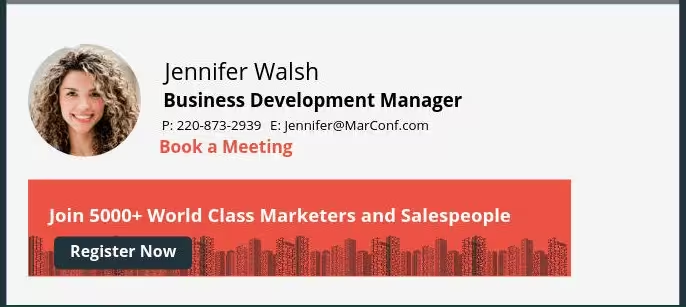
That’s a markedly higher CTR rate than standard display ads - and email signature banners are already finely targeted. We often see the smartest marketing teams put out ABM campaigns that have three or four banners in rotation for email signatures, with each banner customized to a persona, lifecycle stage, or geography.
The channel that’s probably most amenable to fun is personalized gifting. For example, we received a gift of delicious cupcakes after a well-crafted sales call. Yes, we ate the cupcakes. What’s more, we looked at the company’s logo on the box in our break room for more than a week. Talk about targeting.
Braydan Young, a co-founder of Sendoso, which offers personalized gifts as a service linked to CRM, says that cupcakes are among the most effective gifts because it drives conversation and is shared among teams or interlocking decision makers.

4. Create Your Content To Match Your Channels And Your Goals
While ABM is all about personalization, you only want to personalize to a certain degree. You should provide content that is clearly useful and aimed at relatively broad personas (marketing, IT, sales) with small nods to the individual. But by striking the right balance between personalized and broad, you can easily repurpose campaign content and plans for multiple accounts. This helps ABM scale out a bit more easily. ABM that is too personalized and specific might as well be direct sales. So finding a balance is key to making this economical and cost effective.
Not all channels will work for your accounts. For example, if you are selling a product to developers, LinkedIn may not be the best way to reach them because it’s not where they spend their time. Twitter may be a better option. Direct email may be a total non-starter for developers who are barraged by recruiters. However for sales leaders, LinkedIn may be a far better option.
Another factor to consider - many people say one thing and do another. We know many marketers who swear by Facebook ads for B2B campaigns even though most people associate FB primarily with family pictures and sharing news items and personal updates. The big takeaway? We can't stress enough how key it is that you determine which channels will work best for your accounts and named contacts.
Similarly, if your goal is to drive people to buy tickets for your event, you may want to design an event-based ABM strategy (Alon Waks of Bizabo outlines some ideas for this in this article). In that case, you may want to heavily rely on using email as an ABM channel.
Lauren Alt, Sr. Director of DemandGen at Outreach.io and a rising star in the industry found that invites and email banner ads generated a 10% increase in total paid conference registrations because the contacts where already warm and acquainted with the product; ABM email was among the most productive marketing channels for Outreach.
A critical part of building any effective ABM campaign is understanding the costs. These costs tend to be expressed in the language of online advertising - CPM (cost per thousand), CPC (cost per click), CPV (cost per view), CPA/CPCon (cost per action or cost per conversion). There are real price differences between the advertising vehicles across social media and retargeting. LinkedIn tends to be the most expensive option on a CPM basis and requires the most investment but is often cited as having the highest ROI for B2B marketing. Facebook ads are generally the least expensive but there are wide variances. You will probably want someone with familiarity with online advertising to help you plan your campaigns.
Once you have decided on channels you can craft the content based on the delivery options and the action you want to elicit. LinkedIn is probably business-centric content. If you are retargeting display ads, you want a concise and fun message in an eye-catching background. Similarly, if you are using email signature banners, you want something that really jumps out at users. See the example below from our friends Outreach.io (who are, by the way, big fans of ABM and using email for ABM).

To weave all these together, build a cohesive content inventory and a plan on what content should be rolled out where and when. You may want to queue up waves of content so that your targeted accounts are always getting new information.
5. Launch, Measure, Adjust
Cool. You have targets, you content and messages, you have channels. You have a spending budget. You probably even have cupcakes (or SMaaS). Before you launch, think about how you want to sequence the different elements of the campaigns. Which one should land first? What kind of follow ups do you think would work best? And how do the different efforts and content elements play off each other? Sometimes you want a unified message that is the same across all persona. Sometimes you want a slight variation. Sometimes you want to create precise sequencing with a series of unique messages for the different personas in your account contacts.
The upshot? Be thoughtful as ABM can easily turn into what feels like stalking. We’d recommend you lay out all the elements in a Gantt Chart or on a Kanban board like Trello or Asana or Smartsheet. They usually also give you a timeline view so you can visually comprehend how everything fits together. Don't be afraid to adjust the cadence, either. Again, however, people may complain that you are messaging them too often but the data shows higher response rates when the cadence is more frequent. So listen to what people say, hear their complaints but watch what they actually do to reality check sentiments. You don't want to shut down an efficient channel based on a few errant data points.
Also, before you launch make sure you have all the pieces in place for proper measurement. This can mean looking at LinkedIn campaigns, Google or ListenLoop or AdRoll retargeting, email opens and views, or content downloads (if you are directing recipients to landing pages). But keep in mind - the ultimate measurement is whether you get the deal. Attribution is difficult - how much does each ABM element contribute to the decision? And how can you measure the compound impact. You can’t. But that’s the beauty of ABM. Yes, track the metrics and see where you are getting the most engagement. For example, Opensense Email Analytics platform lets our sales and marketing team users know exactly what parts of a PDF or slidedeck that a customer has downloaded they are spending time with, and which of the five recipients on a proposal email are actually opening and watching the videos. This helps some of our customers, like C3 Metrics, know not only whether their email ABM campaign is working but also who is their internal champion. Ultimately, that is who you want to identify and engage with.
Conclusion: ABM Can Be As Basic As ABC
Congratulations! Now you have a basic understanding of how to put on your very first ABM campaign - or possibly how to refine a failed effort.
There are many moving parts but, even when taken together, ABM is a pretty logical process. You should be able to lay out some basic steps after reading this and then, with help from a few experts or account based marketing agencies, create a viable and effective plan for an initial ABM campaign or five. Keep in mind, ABM is a rapidly evolving area so you should probably continue to read up on it and check out other relevant information that pertains to ABM (like which types of media channels are trending and are the most effective and how much they all cost). Above all, ABM has to be a team effort; it’s a lot of work but has a huge payoff.
We hope that you have great success with your first campaign. And we’re also happy to advise on any upcoming email ABM campaigns you might have planned.
Account Based Marketing History
The account based marketing history starts in the late 20th century. ABM account based marketing emerged in response to the limitations of traditional lead generation strategies. The account based marketing vs lead generation comparison can be described with this summary:
While traditional lead generation casts a wide net, ABM marketing adopts a focused approach.
Account based marketing B2B origins trace back to the realization that these types of companies need personalized engagement with their high-value accounts. Early 2000s saw its formalization with technology advancements. Traditional lead generation involves mass outreach to identify potential customers. ABM, however, centers on targeting specific high-potential accounts, treating them as markets of one.
Account based marketing and sales teams are aligned, creating customized campaigns tailored to each account's needs. It relies on deep research and personalized content to resonate with decision-makers. Account based marketing ABM has a personalized, relationship-driven nature. It thrives on quality over quantity, investing resources where they matter most. Traditional lead gen aims to attract a broad audience, whereas ABM nurtures individual relationships, often leading to larger deals and longer customer lifecycles. It fosters a more strategic and collaborative approach between marketing and sales teams. ABM's history reflects a shift from broad outreach to targeted, personalized engagement, amplifying the effectiveness of B2B marketing strategies.
The Official Account Based Marketing Definition
An ABM definition can be unique to each organization, depending on how big they are, what industry they’re in, or the type of customers they’re trying to win. In general though, the ABM marketing definition comes down to prioritizing high-priority accounts and focusing time, resources, and money on these accounts to win or keep them as customers. The ABM meaning in marketing translates to tactics like email signature marketing, targeted advertising, thoughtful direct mail, events, and many other activities. The ABM meaning in business translates to the entire go-to-market team, which includes marketing, sales, customer success, and leadership, working together to prioritize and focus on targeted accounts.
There are longer versions of an ABM meaning available online, which might include account based marketing benefits, account based marketing channel, and even a visual like an account based marketing funnel. You’ll also find specific definitions for individual ABM subjects like ideal customer profile, intent data, and engagement score. There are many terms and definitions to learn in the world of account based marketing. The best ABM certification can accelerate this learning curve for you, as well as resources like this page and other ABM-related content from Opensense. So keep learning, don’t get overwhelmed, and start simple. Then your ABM strategy can grow from there.
More ABM Campaign Ideas
There are many different places to start and directions to go with ABM, which might be overwhelming for some. Need some inspiration for a starting point or ABM campaign ideas? Use this page and the many other helpful ABM resources Opensense has to offer. One account based marketing example that many use as a starting point is targeted email ads. Among all other account based marketing ideas, this is an easy yet effective way to get started with ABM. Other ABM campaign examples include social media engagement, custom webinars, and personalized video messages. Need more account based marketing ideas beyond that? Try a direct mail campaign, account-specific landing pages, or retargeting ad campaigns.
The ABM campaign meaning can vary based on the account based marketing tactics examples. Some account based marketing campaigns can be complicated, with dozens of orchestrated tactics targeting hundreds of accounts at once. Personalized case studies and content campaigns are both account based marketing examples that require more time and effort compared to ABM email examples with personalized banners. You’ll see in personalized ABM landing page examples that they include the target account’s name, but that’s not a required step. Other ABM marketing examples include customized product demos and personalized ROI calculators. LinkedIn InMail campaigns and VIP events are two other account based marketing examples to consider.
What Is an ABM Campaign?
There has been a ripple effect of the rising popularity and now established credibility of ABM. New titles, companies, platforms, features, agencies, and consultants have all been created thanks to marketing strategy. Account based marketing HubSpot and account based marketing Salesforce are two large and well established platforms that are now players in this category. ABM tools HubSpot users love and features of account based marketing in Salesforce all align back to the origins of ABM and true definition, which can be found above. Account Based Marketing Salesforce training is also available now, in addition to ABM certification courses, and many new account based marketing course options. Account based selling Salesforce features have also evolved.
In addition to the big names like HubSpot and Salesforce, there are many other well established ABM tools, account based marketing platforms, full account based marketing solutions, specific account based marketing tools, and account based marketing software examples out there today. The true ABM platform definition can vary, but they are all designed to help with plan, strategize, execute, and measure your ABM efforts. The best way to get to know what’s available is by shopping around, researching, and checking out the reviews. Don’t be overwhelmed by the many account based marketing platforms, embrace the options that you have and pick the account based marketing company that best fits your needs.
Need helping finding the right ABM solution? Account based marketing consultants can help with that. Don’t have enough resources to plan an ABM campaign? An account based marketing agency can be an extension of your marketing team. Is your team too small to execute a full ABM campaign plan? Freelancers offer account based marketing services that can help. If you feel like you don’t have the capacity of bandwidth to start, maintain or fully analyze an ABM strategy, helpful options are available.
The Modern ABM Definition
The origin of personalized marketing and targeting specific accounts goes back to the early days of marketing. However, the account based marketing definition wasn't commonly used until the early to mid 2010s. The term then began to gain traction and shifted marketers’ mindset from treating all leads equally to focusing on high-value accounts. The ABM definition marketing uses and ABS marketing meaning started to become one during this time, as sales and marketing worked together to identify target accounts and create tailored campaigns and content.
The ABM marketing meaning evolved to just a modern, smart, and efficient approach to marketing. Account based marketing statistics supported this and the impact it brought to sales, marketing, customer success, and overall revenue goals of a business. The use of artificial intelligence and data analytics has enhanced the ABM definition marketing uses today. These technologies enable the identification of potential target accounts, the personalization of content at scale, and the measurement of campaign effectiveness in real time. There are new chapters in the account based marketing guide being written because of these and new account based marketing statistics that show how it can be scaled. As modern technology, ABM definition marketing updates, and new account based marketing guide chapters continue to be added, the core principles of an account based marketing plan remain the same.
What’s ABM Mean for Go-to-Market Teams?
There are account based marketing templates available for one-to-one email campaigns, including some that feature targeted email signature banners. It’s also important to develop an account based marketing template for social engagement, so the team member who runs your social accounts can easily interact with target accounts in a way that represents your brand well. An ABM campaign template for personalized video messages is also an efficient way to produce custom videos quickly. These are all tactical plays as a part of a bigger account based marketing plan or account based marketing program. Before a team starts spending time, money, and resources on plays, it’s important to first establish the best ABM campaign strategy for your business. This means asking yourself questions like:
- Who is my ideal customer? What are some traits I can use as data points to find other accounts just like them?
- What industry, size of business, or category does my business serve? How many accounts can I target?
- What technology or team members do I have to execute this ABM marketing strategy and tactical plays?
- What resources do I have available to build an account based marketing framework?
- How will I measure the success of my account based marketing programs and prove ROI to my leadership team?
It might seem like a daunting task to take an ABM strategy definition and translate it to an actionable plan. But there are plenty of resources available to use, like an ABM campaign planning template or account based marketing strategy template, that can help put your plan into action.


.svg)



.svg)

